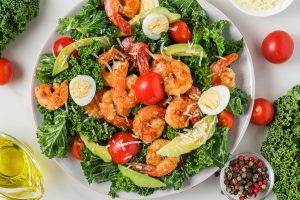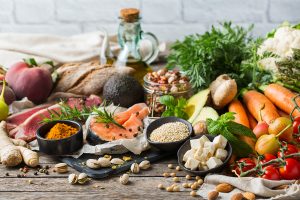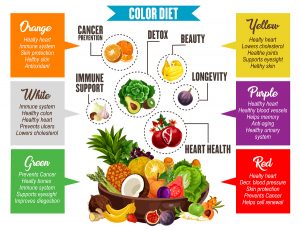People who live in blue zones often turn 100 or older, so we can learn about longevity from the blue zones. The 5 most often cited blue zones are in Okinawa, Japan; Sardinia, Italy; Nicoya, Costa Rica; Icaria, Greece; and Loma Linda, California, United States. But there are many more blue zones throughout the world. These zones contain the most centenarians, people who have reached the age of 100. It is thought that it is the people’s lifestyle that makes them live much longer than the rest of the world.
Lifestyle of centenarians
People are active, are bicycling, walking, swimming, constantly on the go and they are careful about what they eat. They stay slim, but are muscular. Their diet consists mostly of vegetables and salads, with very little meat. They may consume a small piece of beef on Sundays, but not during the rest of the week. Fish may be a part of their diet two or three times per week.
Diet characteristic of blue zones
Sandee LaMotte published an article on March 4, 2023 at CNN, which describes the diet consumed in blue zones. People in blue zones are active, handle stress well, are close to friends, have a purpose in life and are often members of a social or religious group. They eat mostly a plant-based diet and they stop eating before they are full.
The food consists of complex carbohydrates. No processed foods are eaten. The American Heart Association says: “Complex carbohydrates, such as beans, peas, vegetables and whole grains provide vitamins, minerals and fiber that can go missing in processed and refined foods. In addition, they are digested more slowly, and the fiber helps you feel full longer.”
Origin of blue zone foods
The blue zone food has its roots in the African, Asian, Latino and Native American diets. Dan Buettner originally published an article about the blue zones in the National Geographic Magazine. Recently he published a collection of 100 blue zone recipes in book form.
The Mediterranean diet is very close to blue zone eating.
What blue zone meals contain
Buettner said: “The five pillars of every longevity diet, including the blue zone, are whole grains, vegetables in season, tubers, nuts and beans. In fact, I argue the cornerstone of a longevity diet is beans.” People in blue zones eat similar foods as those who eat a Mediterranean diet, but they do not eat as much fish as people on a Mediterranean diet. People on a blue zone diet don’t eat any milk products. On the other hand, goat and sheep’s milk cheeses such as feta and pecorino are part of the blue zone diet. In the blue zones the consumption of purple sweet potatoes, sesame seeds, fresh vegetables and fruit are the major staples.
More info about Blue Zone diet
All of the meals contain complex carbohydrates, micronutrients and a whole variety of fiber.
Perhaps the important difference to the Standard American diet is that in the blue zone there is a lack of beef, hamburgers, processed foods and highly processed carbohydrates like bread, pasta, sugar-sweetened beverages, salty snacks like potato chips, candies, cookies and processed meats (bacon, sausages or cold-cuts). People in blue zones eat very little bread and if they do, they eat sourdough bread, which does not raise the blood sugar level as the highly refined white bread.
Recapturing healthy foods
So, what foods are blue zone people really eating? Tofu, quinoa, mushrooms, lentils, beans, turnip greens, artichokes, asparagus, chickpeas and spinach are the main staples of their nutrition. They stay away from sugar, rarely eat meat (once or twice per week) and otherwise have a healthy lifestyle. Scientists think that longevity comes from the healthy lifestyle and diet, which centenarians practice. Several longevity genes get activated as explained in this publication. This translates into living long lives with very few illnesses and experiencing energy until the end of their lives.
Conclusion
We can learn a lot from observing what centenarians eat and do. Scientist have investigated the lifestyle of people living in blue zones in various parts of the world. These zones contain the most centenarians, people who have reached the age of 100. People in blue zones eat mostly vegetables and very little red meat. They avoid sugar and processed foods. But they are also very active, have a rich social life and allow themselves enough sleep. Scientists accumulated evidence that genetic longevity switches are activated by the life style of people living in blue zones. It is the activation of these epigenetic switches that are responsible for the longevity of people in blue zones.















